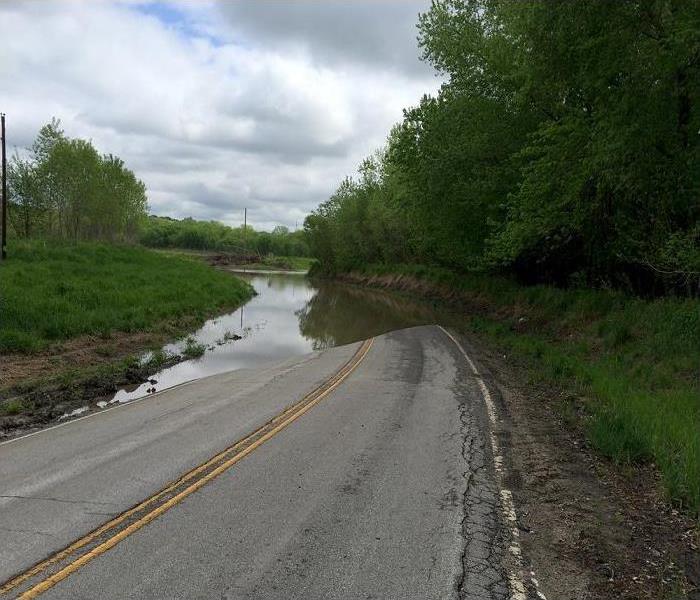Flash Floods
4/16/2018 (Permalink)
What Causes Flash Floods?
Not all floods are the same. Some develop over time, however flash floods happen quickly, and amazingly can occur without visible signs of rain. Causes of flash floods include:
- Excessive rain – within minutes of precipitation or up to 6 hours after.
- Slow-moving rain of a long duration, such as occurs with thunderstorms, tropical storms, and hurricanes.
- A dam/levee failure.
- A sudden release of water held by an ice jam.
- Rainfalls or snowmelts that exceed the capacity of underground drainage pipes and sewage systems.
- Floods after wildfires which reduce the capacity of the ground to absorb water.
- Urbanization, such as paving, which reduces rainfall absorption and increases runoff.
What areas are at risk of flood damage?
- Low-lying areas.
- Areas near water.
- Areas behind a levee or downstream from a dam.
- Areas near canyons.
- Even dry stream beds, culverts, gullies, creeks, small streams, and low-lying grounds that appear harmless in dry weather can be at risk of floods.
Watch or warning – what’s the big difference?
- Watch
Think of a watch as someone yelling at you – “watch out!” Conditions are ripe for a flood, but one hasn’t been spotted… yet. - Warning
All hands on deck! A flood warning from your local weather source means a flood is occurring or is imminent within 30 minutes to an hour.
If a Flood is Likely in Your Area…
All joking aside, a flash flood is serious business. Flash floods are typically accompanied by a dangerous wall of roaring water, which often carries rocks, mud and other debris. If you find yourself facing a flash flood…
- Evacuate.
Evacuate immediately to higher ground. Save yourself, not your belongings. You may have very little time to respond. - Secure your home.
If you have time, turn off utilities at main switches/valves and disconnect appliances. Do not touch electrical lines or equipment if you are wet or are standing in water. Move essential items to an upper floor and bringing in outdoor furniture to prevent flood damage. - Do not walk through moving water.
Only six inches can make you fall. If walking through non-moving water, use a stick to gauge depth/firmness before each step. - Do not drive through flooded areas.
Two feet of water can carry away most vehicles. If swept away in your vehicle, remain inside. If water rises inside the vehicle, seek refuge on the roof. - Choose campsites and parking wisely.
Avoid areas along creeks, streams, or rivers, particularly during threatening conditions.
Flood Damaged?? Contact SERVPRO of Columbia, Montour & Sullivan Counties at 570-759-0966.



 24/7 Emergency Service
24/7 Emergency Service
